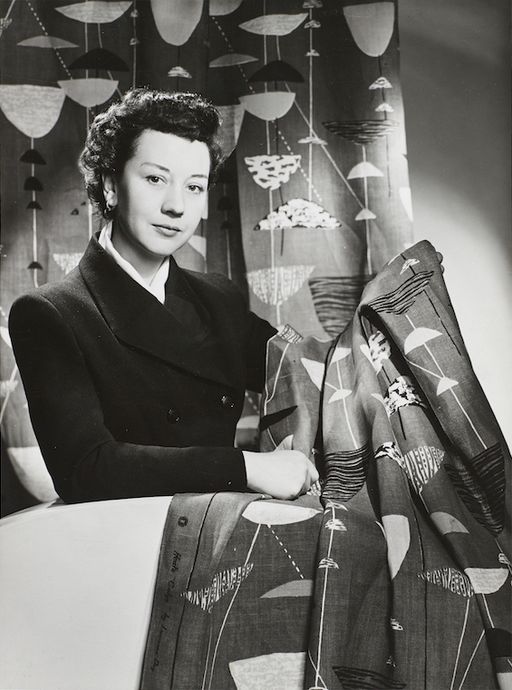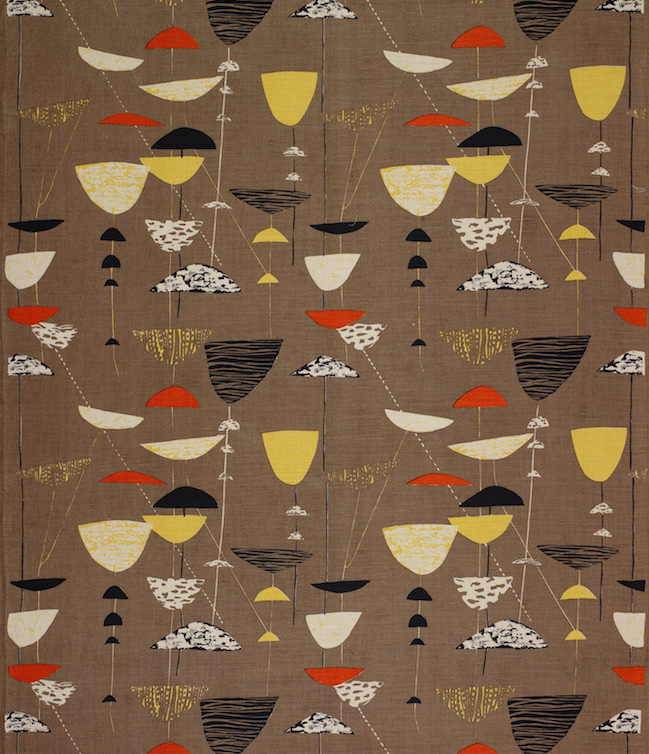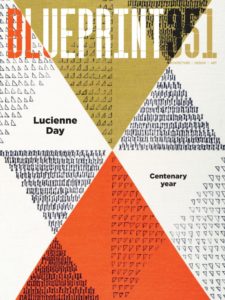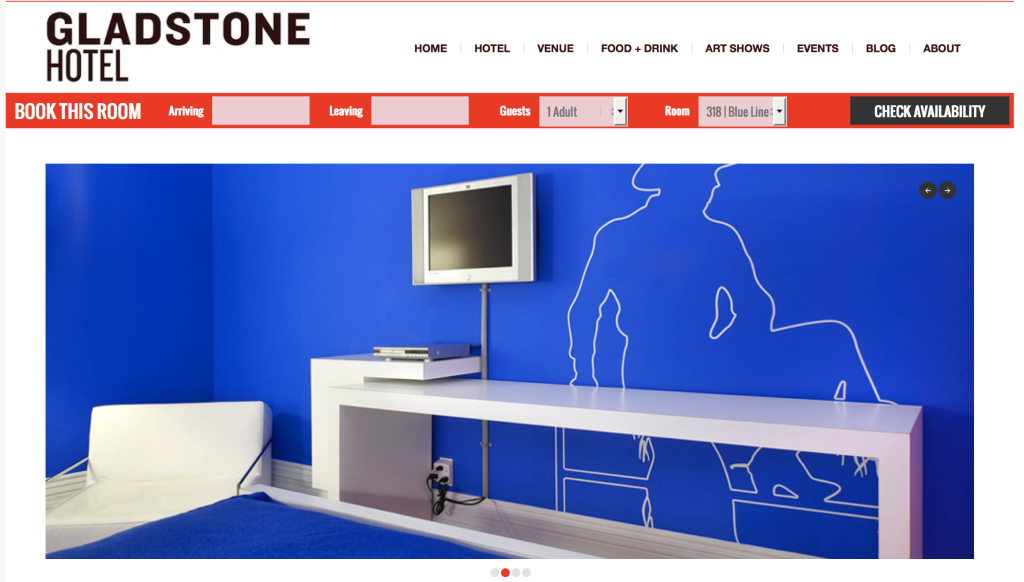
Lucienne Day in New York with Calyx (1951), 1952: The Robin and Lucienne Day Foundation and archive. Photographer: Studio Briggs.
The current issue of Blueprint celebrates the life and work of Lucienne Day in the centenary year of her birth, with articles by and about her. The back pages of the magazine collect previous articles about the renowned designer, including a review I wrote about an exhibition at Manchester’s Whitworth Art Gallery, long before the stunning renovation and addition (mentioned in a previous post about Manchester, here); when I visited the Gallery presented a perfect example of late Victorian institutional architecture, a fine addition to the “Red Brick” University of Manchester. Initially, the thought of re-reading an article written over 24 years ago was a bit daunting, but then it helped me recall my first time in Manchester, an extraordinary day trip, meeting Lucienne Day and Jennifer Harris (the curator and author of the exhibition catalogue), and the privilege of walking the exhibition in their company. A new exhibition at the Gallery, Lucienne Day – A sense of growth, from 14 April to 11 June 2017, examines how plant forms inspired many of Lucienne Day’s iconic patterns. I hope to get back up north to visit it…
“British design’s first celebrity”
by Liz Farrelly
Blueprint, June 1993, pp.36-38
Exhibition review of Lucienne Day: a career in design
Whitworth Art Gallery, Oxford Road, Manchester
23 April to 26 June 1993
Visited 22 April 1993

Calyx screen-printed furnishing fabric, Lucienne Day, Heal’s Wholesale & Export, 1951: The Robin and Lucienne Day Foundation and archive.
After a long and distinguished carer, Lucienne Day is being honoured with a retrospective exhibition which, appropriately enough for a textile designer, is in Manchester. Over 80 per cent of her furnishing fabrics are here, supplemented by examples of designs for wallpaper and tableware, showing a great virtuosity of image-making and variety of aesthetics. And while the exhibition sheds light on an individual’s career, it acts just as effectively as a review of changing styles in domestic taste, albeit at the upper end of the market.
Continue reading



